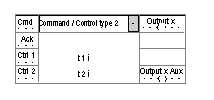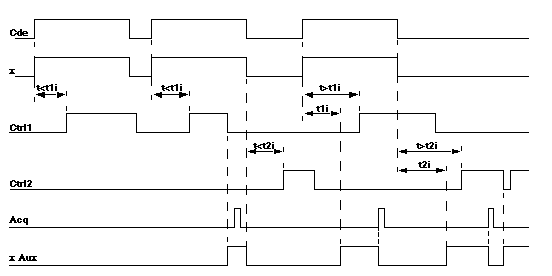|
Reflex function block: Type 2 command-check
|
|
|
(Original Document)
|
|
Name
|
Meaning
|
Illustration
|
|---|---|---|
|
Cde
|
Command input.
|
 |
|
Ctrl n
|
Control n input
|
|
|
Acq
|
Acknowledgement of fault.
|
|
|
x
|
Block's physical output.
|
|
|
x Aux
|
Block's internal auxiliary output.
|
|
Phase
|
Description
|
|---|---|
|
1
|
On the rising edge of input Cde:
|
|
2
|
When time out t1i is over:
The x Aux input is set to 0 in the event of:
|
|
3
|
On the falling edge of input Cde:
|
|
4
|
When time out t2i is over:
The x Aux input is set to 0 in the event of:
|
